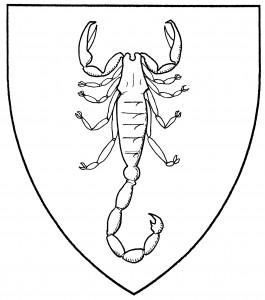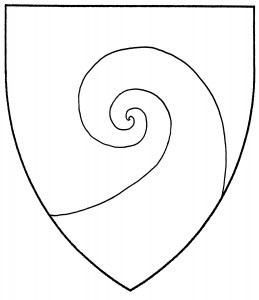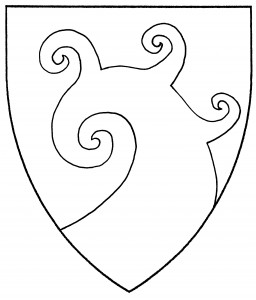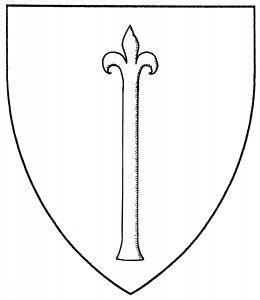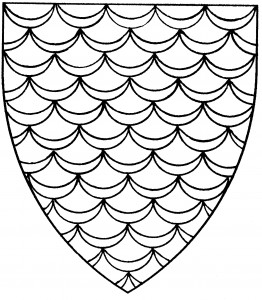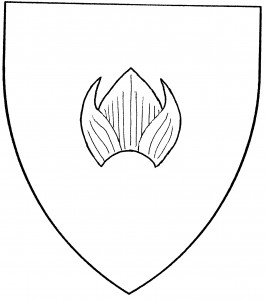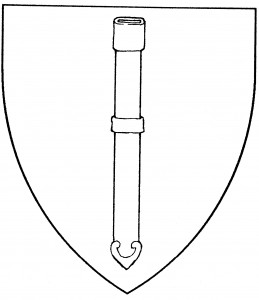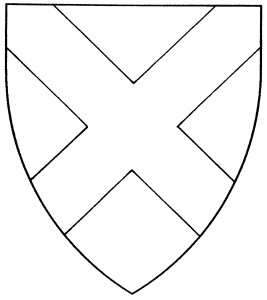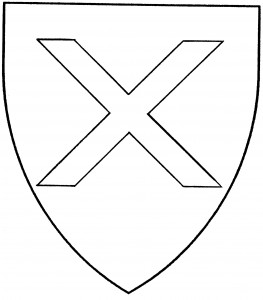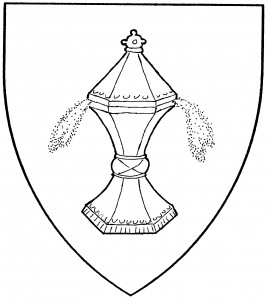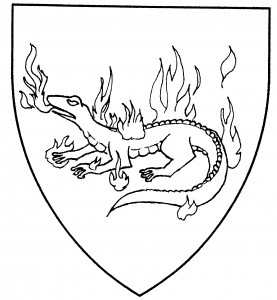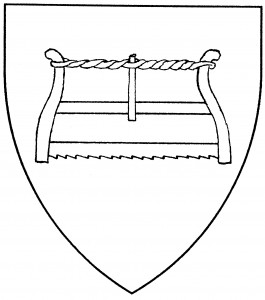
Frame saw (Period)
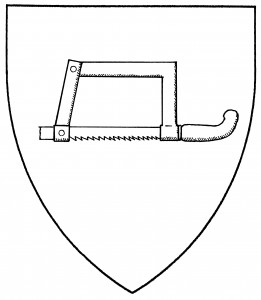
Goldsmith’s framesaw (Period)
A saw is a carpenter’s tool, used mostly for cutting wood; it has a large thin blade with a toothed edge. The most common form of heraldic saw is more fully termed a “frame saw” or a “bow saw”. The artifact dates from at least the 12th Century [Singer 392], but the earliest heraldic example dates from c.1550, in the canting arms (Italian sega) of Seghi [BSB Cod.Icon 278:333]. The frame saw is fesswise, cutting edge to base, by default [Parker 520].
Other saws found in Society armory were first taken from period artifacts; in many cases, they’ve since been documented as charges. For example, the saw blazoned in the Society as a “goldsmith’s framesaw” has the shape of a modern coping saw; however, much the same form is found in period armory, in the arms of Malkas or Malckab, c.1450 [Ingeram 172]. It doesn’t seem to have a default orientation, but when fesswise, the handle is to sinister; when palewise, the handle is to base. The illustration shows a goldsmith’s framesaw fesswise.

Two-man cross-cut saw (Period)
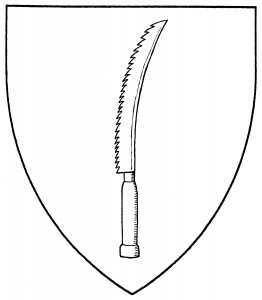
Handsaw (Accepted)
Likewise, the “two-man cross-cut saw”, a much larger tool used for large timbers, was originally documented from Jost Amman’s Book of Trades, 1568 [95]. It was then discovered in period armory as well, in the arms of Mistelbeckten, c.1560 [BSB Cod.Icon 390:749]. This form of saw is fesswise by default.
We also have the “handsaw”, simply a serrated blade with a handgrip. This form, though not yet found in period armory, is found in the Bedford Book of Hours, early-15th C. [Singer plate 30]; it has been accepted for Society use. It has the same default, or lack thereof, as the goldsmith’s framesaw; the illustration shows a handsaw palewise.
Stephen Treebane bears: Argent, a frame saw palewise azure.
Giles of Gamph bears: Per chevron azure and Or, an oak tree eradicated between two bearded axes and a frame saw fesswise, all counterchanged.
Konrad Lockner of Idelberg bears: Counter-ermine, a scarpe gules, overall a wyvern displayed argent maintaining in the dexter claw a bow saw and in the sinister claw a mallet proper.
Tancred of Tangewood bears: Argent, in pale a two-man cross-cut saw and two hammers in saltire sable all within a bordure sable semy of maple leaves argent.
Pearce Redsmythe bears: Purpure semy of rivets Or, a goldsmith’s framesaw bendwise argent, on a chief Or three Bowen crosses sable.
Tomas y Saer bears: Per pale gules and sable, in saltire a Lochaber axe and a handsaw both argent hafted Or, within an orle Or.
